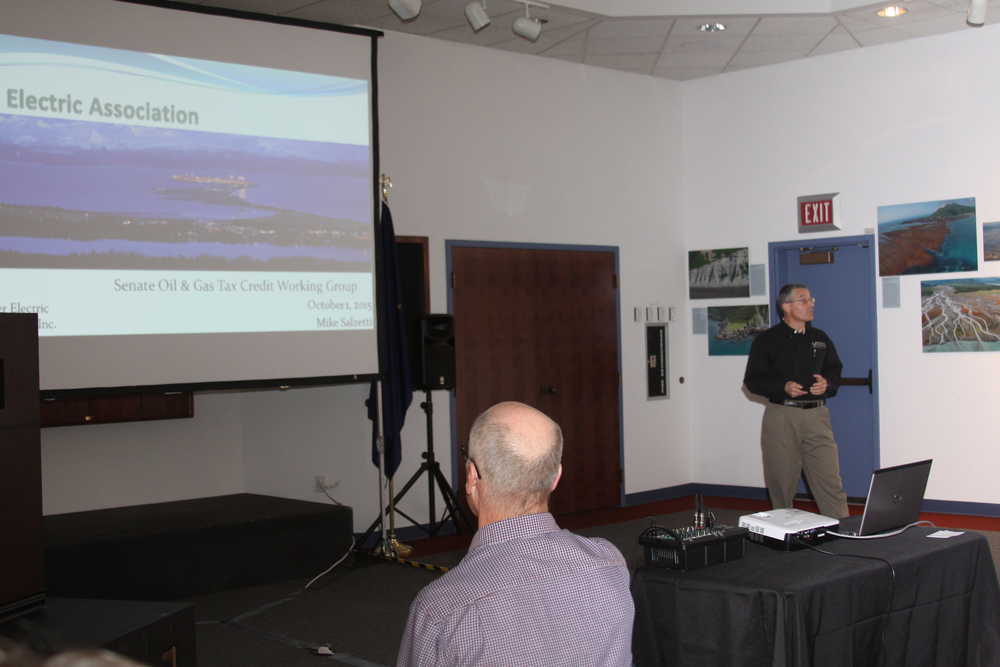The revserse direction in the supply of natural gas that fuels energy utilities like Homer Electric Associaton Inc., (HEA) and Chugach Electric can be directly related to oil and gas tax credits according to Mike Salzetti, HEA manager of fuel supply and renewable energy development.
“We’ve seen a bunch of new players like Hilcorp, Furie and Blue Crest come to town and we’ve also seen an increase in gas supply in the (Cook) Inlet and have utilities signing contracts through 2018 and this is a direct result of the Cook Inlet oil and gas tax credits,” Salzetti told a recent meeting of the Kenai Chapter of the Alaska Support Industry Alliance.
It was 2010 when supplies of natural gas from the Cook Inlet for utilities uses were in question, and importing Liquified Natural Gas to meet the demand was being discussed.
“I believe the turn-a-round is a direct result of the oil and gas tax credits and the change in those tax credits could change things again. There are some tremendous budget challenges but I think we really need to take a hard look at the renaissance we’ve seen here in the Cook Inlet with oil and gas due to those credits,” said Salzetti.
Opening and closing a gas or oil well is not like turning a light switch off and on he says.
“Especially in a mature oil and gas field and reservoir like Cook Inlet it is very hard once a well is shut (down) to bring it back to previous production levels, so it’s important to have the constant demand and supply continue,” he said.
“I think Alaska has a lot of renewable energy potential, it’s just that we need to be smart and we need to be economical at developing it,” Salzetti said when asked about renewable energy.
“There are geothermal potentials out there, hydro-potentials and even tidal potentials out there, but it has to be close to current transmission infrastructure to make it economically feasible.”
Natural gas is still the best resource as it is a lengthy process to bring alternatives on line, Salzetti said.
“The experience we are currently facing with the Grant Lake Hydroelectric project we are trying to license is an example. Right now we’ve been studying that project and trying to get to a final license application for nearly six years. We plan to file a final application in December but then it will be another nine months to two years for FERC (Federal Energy Regulatory Commission) to decide and hopefully grant a construction license. So it takes six-to-eight years just to license a hydroelectric project. I would really encourage people to understand the issues and become engaged in the process that will be happening during the special session. The legislators are working hard to educate themselves on the process by bringing producers and departments of revenue and utility companies in, but the people need to stay informed as well and in touch with their legislators because it can have an impact on all of us.”

